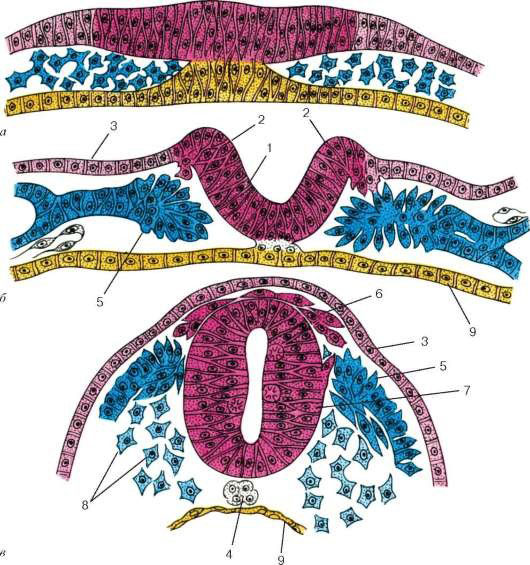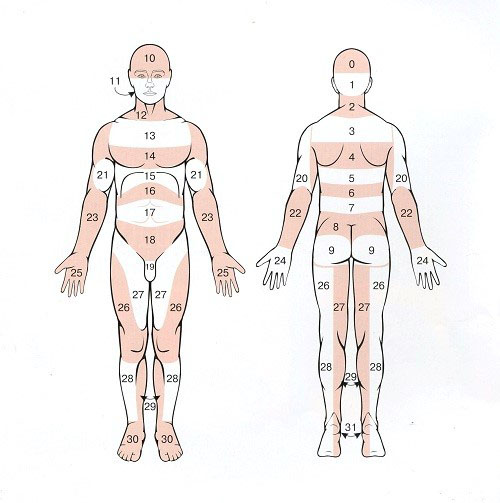Excretory system of the body and application therapy Lyapko
Isolation is a part of the metabolism, carried out by removing from the body the final and intermediate products of metabolism, foreign and excess substances, to ensure the optimal composition of the internal environment and normal life.
The processes of excretion are an integral feature of life, therefore their violation inevitably leads to violations of homeostasis, metabolism and functions of the body, up to its death. The excretion is inextricably linked with the exchange of water, since the main part of the substances intended for excretion from the body is excreted dissolved in water. The main organs of excretion are the kidneys, which form and excrete urine and, together with it, substances to be removed from the body.
The kidneys are also the main organ for providing water-salt metabolism.
1 Organs that perform excretory functions
2 excretory function of the liver
3 excretory function of the stomach
4 excretory function of the intestine
5 Excretory function of the lungs
6 excretory function of the skin
7 How is the skin connected to the nervous system and internal organs?
Organs that perform excretory functions
The function of excreting substances from the internal environment of the body is carried out by:
- kidneys;
- liver and digestive tract;
- lungs;
- skin and mucous membranes;
- salivary glands.
The excretion processes implemented by them are in a coordinated relationship and therefore functionally these organs can be united by the concept of "excretory system of the body". There are functional and regulatory relationships between the excretory organs, as a result of which a shift in the functional state of one of the excretory organs changes the activity of the other within a single excretory system. So, for example, with excessive excretion of fluid through the skin by sweating at high temperature, the volume of urination decreases, with a decrease in the excretion of nitrogenous compounds in the urine, their excretion through the gastrointestinal tract, lungs and skin increases.
Sweating is regulated by neurogenic-sympathetic cholinergic influences, as well as hormones - vasopressin, aldosterone, thyroid hormones and sex steroids.
excretory function of the liver
The excretory function of the liver is realized due to the formation of bile secretion in it. During the day, the liver secretes from 500 to 2000 ml of bile, but most of its volume is then reabsorbed (absorbed) in the gallbladder and intestines. With bile, the end products of the metabolism of hemoglobin and other porphyrins are excreted from the body in the form of bile pigments, the end products of cholesterol metabolism are in the form of bile acids. Despite reabsorption in the intestines, some of these substances leave the body with fecal matter. As part of bile, thyroxine, urea, calcium and phosphorus are excreted from the body, as well as substances entering the body: drugs, pesticides, etc. In the gallbladder, part of the water and substances dissolved in it are reabsorbed into the blood, primarily electrolytes.
excretory function of the stomach
The excretory function of the stomach ensures the excretion of metabolic products (urea, uric acid), medicinal and toxic substances (mercury, iodine, salicylates, quinine) in the gastric juice.
excretory function of the intestine
The excretory function of the intestine is:
Firstly, in the release of decay products of food substances that have not been absorbed into the blood, and which are compounds that are unnecessary or harmful to the body.
Secondly, the intestine excretes (releases) substances that have entered its lumen with digestive juices (gastric, pancreatic) and bile. At the same time, many of them are metabolized in the intestine and not the substances themselves are excreted with feces, but their metabolites, for example, metabolites of bilirubin, bile.
Thirdly, the intestinal wall is capable of excreting a number of substances from the blood, among which the excretion of plasma proteins is of particular importance. If this process is excessive, there is an excessive loss of protein by the body, leading to pathology. From the blood, the intestinal epithelium excretes salts of heavy metals, magnesium, almost half of all calcium excreted by the body. Together with excrement, a certain amount of water is also excreted (on average, about 100 ml / day).
Excretory function of the lungs
Excretory function of the lungs and upper respiratory tract.
The processes of gas exchange occurring in the lungs ensure the removal of volatile metabolites and exogenous substances from the internal environment of the body - carbon dioxide, ammonia, acetone, ethanol, methyl mercaptan, etc. In addition, due to the ciliated epithelium, the metabolic products of the lung tissue itself and the epithelium are removed airways, such as surfactant degradation products. The lungs secrete small amounts of protein, including gamma globulins, which have an affinity for the lung tissue, as well as those that are part of the secretion of the glands of the bronchial tree. A significant amount of water evaporates through the mucous membrane of the respiratory tract (from 400 ml at rest to 1 liter with increased breathing), and with an increase in the permeability of the air-blood barrier, purines, adenosine and guanosine monophosphates can be released from the blood in excess.
excretory function of the skin
The excretory function of the skin is mainly provided by the activity of the sweat glands and, to a lesser extent, the sebaceous glands. On average, a person produces from 300 to 1000 ml of sweat per day. The amount of sweat depends on the ambient temperature and the intensity of energy metabolism. In conditions of great physical exertion and high air temperature, sweating can increase up to 10 liters per day. The compositions of sweat and blood plasma are different, therefore, sweat is not a simple plasma filtrate, but a secretion of the sweat glands. With sweat, up to 1/3 of the total amount of excreted water, 5-10% of all urea, uric acid, creatine, chlorides, sodium, potassium, calcium, organic substances, lipids, microelements are excreted from the body at rest. Even more calcium can be excreted through the skin than is excreted in the urine.
The secret of the sebaceous glands is 2/3 water, and 1/3 are unsaponifiable compounds - cholesterol, squalene (aliphatic hydrocarbon), casein analogues, metabolic products of sex hormones, corticosteroids, vitamins and enzymes. In the excretory system, the sebaceous glands are not of great importance, because. only about 20 g of secretion is secreted per day. The regulation of the sebaceous glands is provided mainly by sex and adrenal steroids. In closed, unventilated rooms with a large crowd of people (lecture rooms, gym, baths, etc.), people may be poisoned by their toxic substances.
How is the skin connected to the nervous system and internal organs?
The neural tube is the basis of the future nervous system, which is formed in the fetus. It develops from the outer cell layer (germ layer - ectoderm) along with the skin, while the digestive system is formed from the endoderm. First, the neural plate appears, then small elevations, called neural folds, form on its edges, in the center of which a gutter appears. It will later serve as a cavity for the nervous system. On the 24th day of fetal development, the plate begins to twist, and the rollers close, a tube shape is formed. The final formation of the tube occurs for a period of 5-8 weeks, when the development of all organs of the fetus is laid, the heart, lungs, sensory organs, limbs and other systems are formed. There is a further complication of the neural tube (Fig. 1).

Fig. 1 Scheme of the formation of the neural tube of the embryo
A stage of the neural plate.
B stage of the neural tube.
B-isolation of the neural tube and ganglionic plate from the ectoderm.
1-neural groove; 2-nervous rollers; 3- skin ectoderm; 4- chord; 5- mesoderm; 6 - ganglionic plate; 7-neural tube: 8 - mesenchyme; 9- neurocoel.
Zakharyin-Ged zones are limited areas of the skin in which, in diseases of the internal organs, reflected pain often appears, as well as changes in sensitivity in the form of pain and temperature hyperesthesia (hypersensitivity).
Medical experience has shown that some of the acupuncture points coincide with the zones of skin hyperesthesia of Zakharyin-Ged, which is taken into account and used in acupressure, acupuncture and punctuation (point) reflexology.
Application therapy Lyapko
Lyapko's applicators in various modifications (plates, rollers, applique belts, applique tapes) are an original, powerful device with many health-improving therapeutic possibilities.
Their action is based on the principles of traditional Chinese medicine - superficial multi-needle acupuncture, as well as on the general physiological mechanisms of life. More detailed information can be obtained in the article "Lyapko applicators - mechanisms of action and application zones".

The choice of the most important area (zone, stripe, segment) of the skin on the surface of the body will depend on the main diagnosis, pathology, zone of damage to certain organs, and the level of segmental innervation of these organs.
In the guidelines for the use of Lyapko's application therapy for each disease, a schematic drawing is always given indicating the necessary areas of application.

Thanks to Lyapko's application therapy, it is possible to restore the functioning of internal organs and improve the function of the excretory system of the body.
